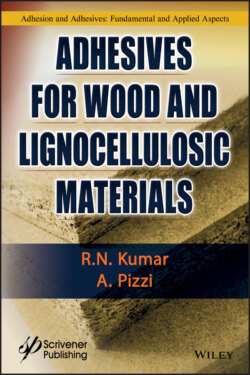Читать книгу Adhesives for Wood and Lignocellulosic Materials - R. N. Kumar - Страница 26
1.4.3.3 Evidences for the Phenylpropane Units as Building Blocks of Lignin
ОглавлениеThe following methods based on classical organic chemistry, namely, degradation and synthesis, led to the conclusion, already by 1940, that lignin is built up by phenylpropane units [11].
1 Permanganate oxidation (methylated spruce lignin) affords veratric acid (3,4-dimethoxybenzoic acid) and minor amounts of isohemipinic (4,5-dimethoxyisophthalic) acid and dehydrodiveratric acid. The formation of isohemipinic acid supports occurrence of condensed structures (e.g., β-5 or γ-5). See structures 1 to 3 in Figure 1.6.
2 Nitrobenzene oxidation of softwoods in alkali results in the formation of vanillin (4-hydroxy-3-methoxybenzaldehyde). Oxidation of hardwoods and grasses results respectively in syringaldehyde (3,5 dimethoxy-4-hydroxybenzaldehyde) and p-hydroxybenzaldehyde. See structures 4 to 6 in Figure 1.6.
3 Hydrogenolysis yields propylcyclohexane derivatives. See structure 7 in Figure 1.6.
4 Ethanolysis yields so-called Hibbert ketones. See structures 8 to 11 of Figure 1.6.
Figure 1.6 Various degradation products of lignin.
